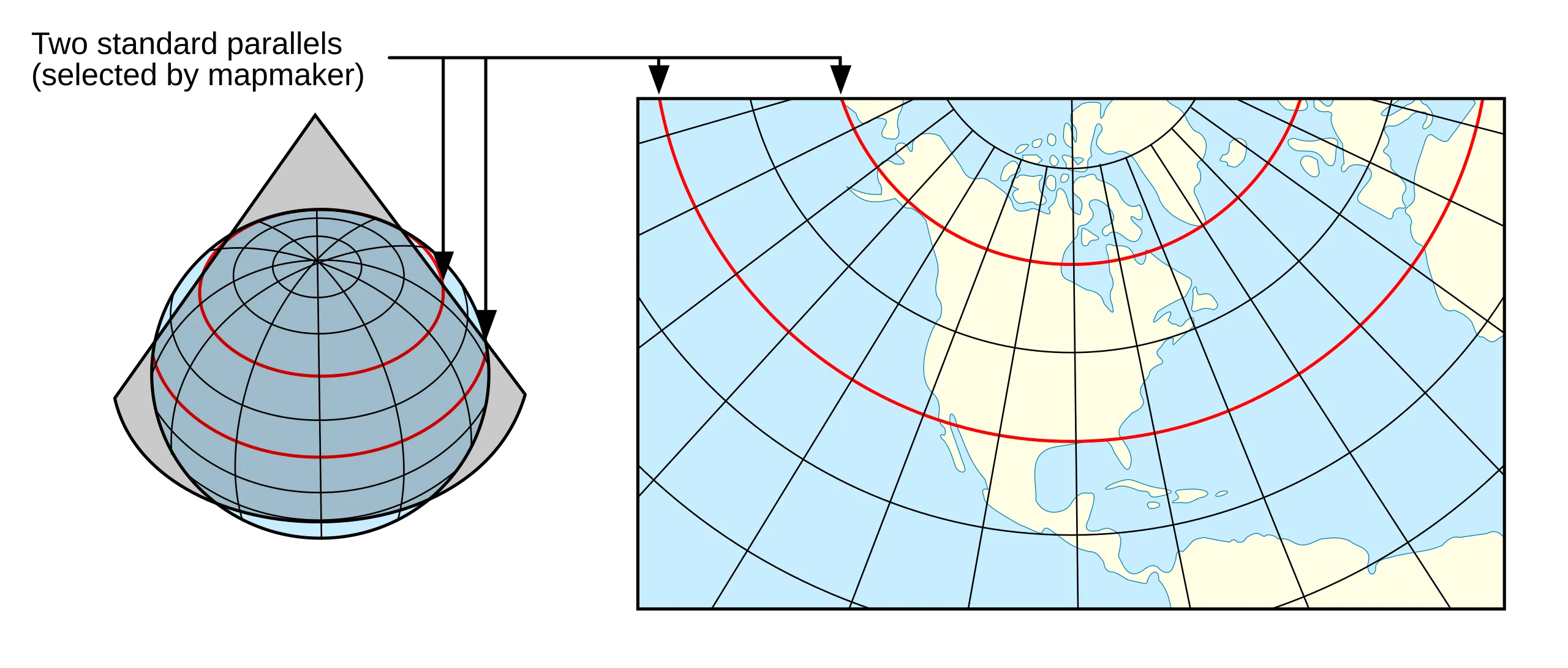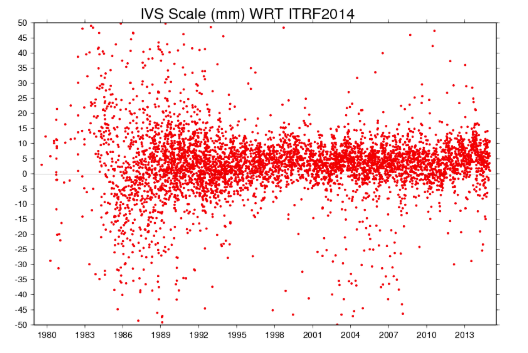Lambert Conformal Conic Projection
Lambert Conformal Conic Projection is a conic projection method that projects the earth’s surface onto a cone and then unfolds the cone into a flat map. This projection method was developed by French mathematician Johann Heinrich Lambert and is widely used because it is particularly suitable for map making in mid-latitude areas.
2025-09-16 14:47:02Lambert Azimuthal Equal-Area Projection
Lambert Azimuthal Equal-Area Projection is an equal-area azimuthal projection proposed by German mathematician Johann Heinrich Lambert in 1772. This projection maps points on the earth’s surface onto a plane through spherical projection, keeping the projection area unchanged, that is, the area ratio of the area before and after the projection is strictly equal. There is no deformation at the center of the projection, and as the distance from the center increases, the angle and shape deformation gradually increase, but the area deformation is always zero.
2025-09-16 14:47:00QGS
QGS file is one of the standard formats of QGIS (Quantum GIS) software project files. It is an XML-based text file used to save QGIS project configurations, including data sources, layer styles, map views, coordinate reference systems, and other settings. The QGS file itself does not contain geographic data, but records how to reference and render external spatial data (such as vector files, raster data, databases, etc.).
2025-09-16 14:47:42Alembic
Alembic is an open source geometry cache file format and related software tools widely used in the field of computer graphics. It is mainly used to efficiently transmit and exchange complex geometric data, especially animation and simulation data, between different 3D software and renderers. It is also gradually emerging in the field of geographic information systems (GIS). It can accurately store the vertex positions, animation keyframes, deformation information, etc. of 3D models, and has good compression performance, which can effectively reduce the amount of data and improve data transmission and storage efficiency.
2025-09-16 14:48:11JSON (JavaScript Object Notation)
**JSON **(JavaScript Object Notation) is a lightweight data exchange format based on a subset of the JavaScript language and is widely used for data transmission and storage. JSON uses key-value pairs to represent data, using a simple, easy-to-read text format that is also easy to parse and generate, making it a universal data exchange format.
2025-09-16 14:47:22JTOpen
JTOpen is not a GIS software in the traditional sense. It is a set of open source class libraries for interacting with IBM i (formerly OS/400) systems in the Java language environment. However, it can play an important role in GIS application scenarios involving the association of geospatial data with IBM i systems.
2025-09-16 14:48:15MIF (MapInfo Interchange Format)
MIF (MapInfo Interchange Format) is a vector data format used by MapInfo software to store the geometry and attribute information of geographic features. MapInfo is a commonly used geographic information system (GIS) software, and MIF files are one of its common data exchange formats.
2025-09-16 14:47:39International Terrestrial Reference Frame 2014 (ITRF2014)
ITRF2014 is the latest version of the International Earth Reference Frame. It is built based on multi-technical integrated observation data, providing high-precision earth coordinates and motion parameters, and providing a unified benchmark for geological research, space activities and geodesy.
2025-09-16 14:47:07SID(MrSID, Multi-Resolution Seamless Image Database)
SID (MrSID, Multi-Resolution Seamless Image Database) is a raster data format specially designed for the storage and distribution of geospatial images, developed by LizardTech in the United States. It is well-known for its efficient image compression technology and is widely used in industries that need to store and transmit large-scale image data, such as geographic information systems (GIS), remote sensing, and mapping.
2025-09-16 14:47:33
 Service
Service










